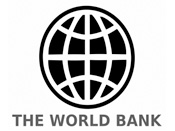climate finance
- Home
- Climate Finance
climate finance
Accelerating climate finance
Climate finance: a supply and demand problem
Entities on the demand side, including governments, project proponents, and businesses seeking finance, frequently encounter challenges in accessing funding on a large scale. Many of these entities lack a comprehensive understanding of the available financial options due to the highly fragmented and complex nature of the current climate finance landscape. Additionally, they require assistance in developing investable propositions. On the supply side, finance providers looking to invest in climate projects or businesses, both locally and internationally, often struggle with a limited understanding of available funding pipelines, particularly in sectors or geographies with inadequate policies, governance structures, and regulations. To optimize the allocation of investments, finance providers need a thorough analysis of existing funding gaps and a clear understanding of the priorities of vulnerable communities and countries. Furthermore, existing project pipelines are often not "investment-ready" and necessitate targeted technical and capacity-building support to transform them into credible propositions for presentation to finance providers.
Our approach: bridging the gap between supply and demand
For over a decade, ETS has played a crucial role in bridging the gap between those in search of financial support and those eager to invest. Our expertise is dedicated to aiding governments, businesses, and project proponents in developing nations to secure funding for the implementation of their Nationally Determined Contributions (NDCs) and other climate plans. Simultaneously, we provide guidance to finance providers and investors, enabling them to seize new market opportunities aligned with their net-zero and climate aspirations. Through our strategic and technical counsel, clients not only save resources but also safeguard property, natural ecosystems, and communities, fostering climate-resilient and low-carbon development. Our comprehensive approach is structured across four key stages: discover, assess, plan, and capitalize. This approach covers 'upstream' policy dialogue, 'midstream' project identification, and 'downstream' finance structures and project preparation.
climate finance
Discover
Climate finance ecosystem and flow mapping
Examining the climate finance ecosystem and flow mapping involves delineating the intricate networks and pathways of climate finance within a country or region. This comprehensive analysis aims to discern priority sectors and technologies, facilitating a nuanced understanding. Such insights are pivotal in constructing compelling business cases for novel initiatives, offering beneficiaries and donors clarity on how their endeavours align with national priorities.
Market mapping
Conducting market mapping entails a meticulous exploration to ascertain the dimensions and characteristics of potential markets and investment opportunities. This systematic approach aids in articulating persuasive business cases for emerging initiatives and equips investors with a profound understanding of the climate impact associated with their activities.
climate finance
Assess
Capacity assessment
Conducting a capacity assessment involves evaluating the institutional and governance capabilities across the entire climate finance investment chain. This comprehensive analysis aims to gauge the effectiveness of structures in place to facilitate climate-related investments.
Enabling environmental diagnostic
Simultaneously, an enabling environmental diagnostic is undertaken to assess the degree to which the domestic market fosters climate investments and identify key opportunities for improvement. This diagnostic process considers various factors, including the regulatory framework and the overall market environment, to determine the extent of support provided for climate-focused initiatives.
climate finance
Plan
Project Identification
Discovering a portfolio of potential projects through a comprehensive approach, incorporating both top-down and bottom-up methodologies. This involves aligning with the beneficiary's priorities and engaging in extensive consultation with key stakeholders and potential project proponents. The aim is to assist them in structuring projects in accordance with the requirements of funders.
Strategy Development
Creating approaches to attract concessional finance and/or private capital to achieve climate goals.
Capacity Enhancement
Strengthening the capabilities of countries receiving climate finance by facilitating access to climate funds and assisting in the accreditation process.
climate finance
Capitalise




















